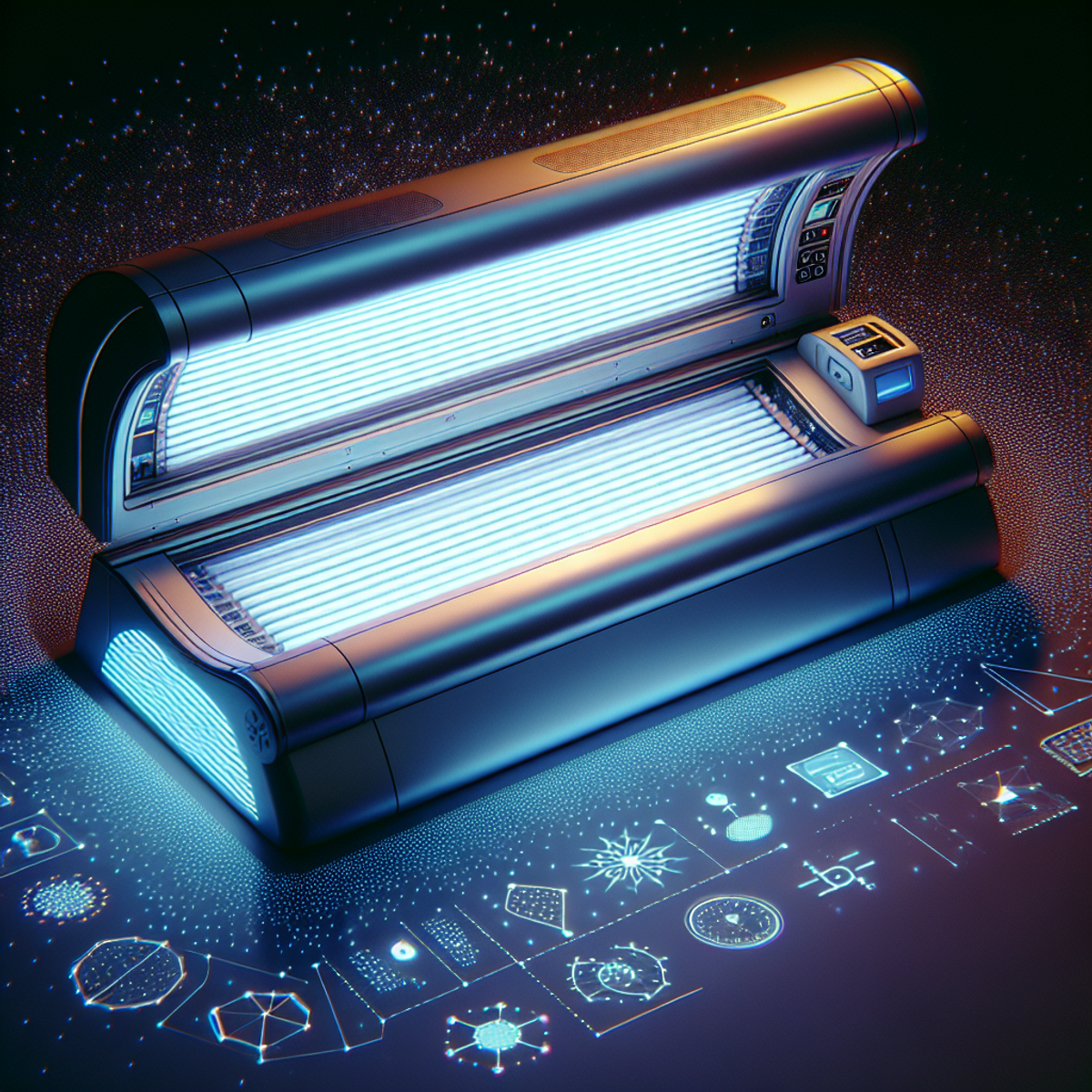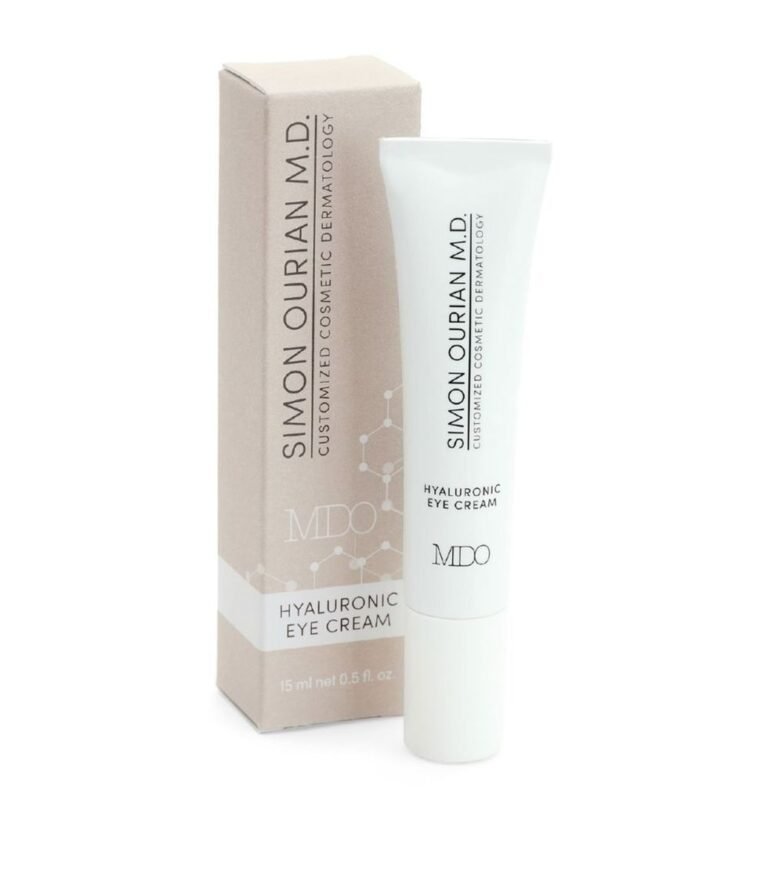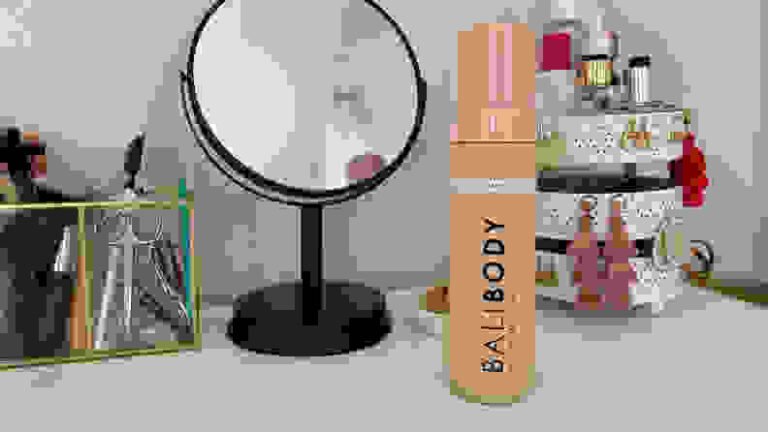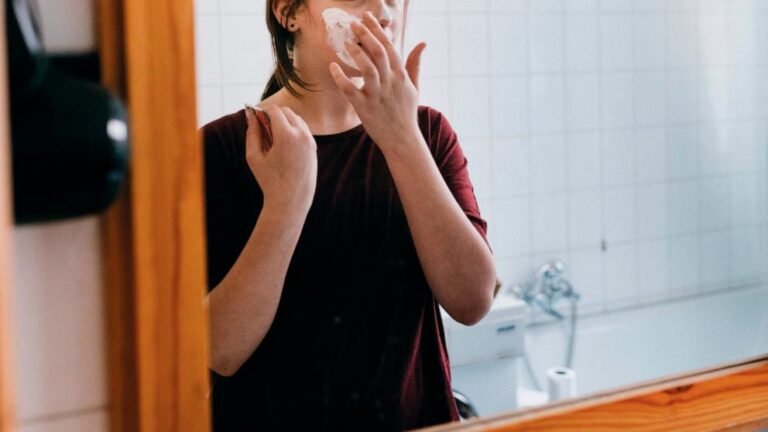Tanning Bed for Beginners – Do’s and Don’ts | Help & Advice

Introduction
Tanning beds have become increasingly popular among individuals seeking a sun-kissed glow. These indoor tanning devices emit ultraviolet (UV) radiation, which mimics the effects of the sun’s rays on the skin. Tanning beds offer a convenient and controlled environment for achieving a tan, regardless of the weather or time of year.
However, it is important to be aware that improper use of tanning beds can pose risks to your health. Overexposure to UV radiation can lead to sunburn, premature aging, and an increased risk of skin cancer. As a beginner, it is crucial to educate yourself on the subject and understand how to use tanning beds safely and effectively.
This comprehensive guide aims to provide you with essential do’s and don’ts of using a tanning bed. By following these guidelines, you can enjoy the benefits of artificial tanning while minimizing potential risks. So let’s dive in and explore everything you need to know for a safe and successful tanning bed experience.
Remember: Your skin health should always be a priority!
Understanding Tanning Beds
Tanning beds, also known as sunbeds, are devices designed to emit ultraviolet (UV) radiation to darken the skin artificially. They have gained popularity as a convenient method for achieving a tan, especially when natural sun exposure is limited. Understanding how tanning beds work and their differences from natural sun tanning is essential for beginners venturing into artificial tanning.
How Tanning Beds Work
Tanning beds operate by producing UVA and UVB rays, which penetrate the skin and stimulate melanin production. Melanin is the pigment responsible for the skin’s coloration. When exposed to UV radiation from tanning beds, melanin production increases, leading to darker skin over time. The strength of the UV rays emitted by tanning beds can be adjusted to suit different tanning preferences and skin types.
Artificial Tanning vs. Natural Sun Exposure
Artificial tanning through tanning beds differs from natural sun exposure in several ways:
- Controlled Environment: Tanning beds provide a controlled environment where the intensity and duration of UV exposure can be regulated based on individual needs and skin sensitivity. In contrast, natural sun exposure is subject to varying weather conditions and uncontrollable UV levels.
- Consistent Exposure: With tanning beds, individuals can achieve consistent exposure to UV rays throughout their tanning sessions, ensuring an even tan. Natural sun tanning may result in uneven pigmentation due to factors such as clothing coverage or body positioning during outdoor activities.
- Time Efficiency: Tanning beds offer a time-efficient alternative to natural sun tanning, as users can achieve desired results in shorter sessions without prolonged outdoor exposure.
- UV Spectrum: The spectrum of UV radiation emitted by tanning beds may differ from that of natural sunlight, influencing the way the skin responds to artificial tanning compared to natural sun exposure.
Understanding these distinctions between artificial and natural tanning methods is crucial for beginners seeking a comprehensive grasp of the tanning process and its implications for their skin health.
By gaining insights into how tanning beds function and their differences from natural sun exposure, individuals can make informed decisions about incorporating artificial tanning into their beauty routines while prioritizing safety and responsible tanning practices.
Preparing Your Skin for a Tanning Session
Understanding your skin type is crucial in determining the right approach to tanning bed use. Different skin types react differently to UV exposure, and it’s essential to tailor your tanning experience based on your skin’s characteristics. Here are some specific recommendations for different skin types:
Recommendations for Fair Skin
People with fair skin are more prone to sunburn and require shorter exposure times. It’s crucial for individuals with fair skin to start with minimal tanning bed sessions and gradually increase the duration to avoid overexposure.
Recommendations for Medium Skin
Individuals with medium skin tones have a lower risk of burning but still need to be cautious. Moderately timed sessions are recommended, and it’s important to monitor the skin’s response to UV exposure.
Recommendations for Olive or Dark Skin
People with olive or dark skin have more natural protection against UV rays, but that doesn’t make them immune to potential damage. While they may tolerate longer exposure times, it’s essential to avoid excessive tanning to prevent long-term skin issues.
Safety guidelines play a critical role in ensuring a safe and effective tanning experience for beginners. When using a tanning bed, always adhere to the following safety measures:
- Use protective eyewear specifically designed for indoor tanning to shield your eyes from UV radiation.
- Apply a suitable indoor tanning lotion before the session to enhance melanin production and protect your skin.
- Refrain from using outdoor sunscreen while indoor tanning, as these products can block UV rays and inhibit the tanning process.
- Always follow the recommended exposure times based on your skin type and sensitivity levels.
Properly preparing your skin before a tanning session is key to achieving desirable results while minimizing potential risks. Here are some essential steps for skin preparation:
- Exfoliation: Gently exfoliate your skin before each tanning session to remove dead cells, dirt, and oils. This process helps ensure an even tan by creating a smooth surface for UV exposure. For more information on how to prepare your skin effectively, you can refer to this guide on preparing for a tanning bed session.
- Moisturization: Hydrated skin tans more evenly and retains its color longer. Use a moisturizer that is specifically formulated for indoor tanning or one that does not contain any oils, as oil-based products can create a barrier between your skin and the tanning rays.
By understanding your skin type, following safety guidelines, and properly preparing your skin before each session, you can embark on your tanning journey with confidence and reduce the risk of adverse effects associated with improper use of tanning beds. However, it’s important to note that prolonged exposure to UV radiation from tanning beds can still have negative consequences on your skin health, including an increased risk of skin cancer. So it’s crucial to strike a balance and prioritize the well-being of your skin above achieving a deep tan.
Dos and Don’ts of Tanning Bed Usage
In this section, we will cover the key do’s that you should keep in mind before, during, and after using a tanning bed. We will also discuss important don’ts to avoid for a safe tanning experience.
Hydrating Your Skin Adequately Before a Tanning Session
- Do: Hydrate your skin properly before getting into a tanning bed. Well-hydrated skin is less likely to dry out or suffer damage from the UV rays emitted by the bed. Use a moisturizer suitable for your skin type at least an hour before your session.
- Don’t: Forget to moisturize or use heavy lotions immediately before tanning. This can create a barrier on your skin and affect the effectiveness of the tanning process.
The Benefits of Exfoliating Prior to Using a Tanning Bed
- Do: Exfoliate your skin before a tanning session to remove dead skin cells and ensure an even tan. This helps the UV rays penetrate the skin more effectively and gives you better results. Use a gentle exfoliating scrub or brush to avoid damaging your skin.
- Don’t: Exfoliate too aggressively or use harsh scrubs that can irritate your skin. Be gentle, especially if you have sensitive skin.
Why Wearing Protective Eyewear is Essential
- Do: Always wear protective eyewear specifically designed for tanning beds. The UV rays emitted by these beds can cause serious damage to your eyes, including corneal burns and cataracts. Protecting your eyes is crucial for maintaining long-term eye health.
- Don’t: Rely on regular sunglasses or close your eyes during a tanning session. Regular sunglasses do not provide adequate protection against UV rays, and closing your eyes still exposes them to potential harm.
Risks and Consequences of Tanning with Sunburned Skin
- Do: Wait until your skin has fully healed from sunburn before using a tanning bed. Tanning on already sunburned skin can increase the risk of further damage, pain, and discomfort. Give your skin enough time to recover before exposing it to UV rays again.
- Don’t: Be tempted to use a tanning bed when you have sunburned skin. It is important to prioritize your skin’s health and avoid exacerbating any existing damage.
The Importance of Removing Makeup, Lotions, and other Products
- Do: Remove all makeup, lotions, and other products from your skin before using a tanning bed. These products can create a barrier that blocks the UV rays and prevents them from effectively darkening your skin. Cleanse your skin thoroughly before your session for optimal results.
- Don’t: Forget to remove any barriers on your skin that could interfere with the tanning process. Leaving makeup or lotions on can lead to uneven tan lines or patches.
Understanding the Dangers of Overexposure to UV Radiation
- Do: Be aware of the recommended exposure time for your specific skin type and follow it strictly. Overexposure to
Ensuring a Safe Tanning Session
When it comes to ensuring a safe tanning session, paying attention to your body position is crucial. Optimizing your body positions helps ensure an even tan without putting too much strain on any particular area of the skin. Here are some tips to consider:
Body Position Optimization
- Even Exposure: To achieve an even tan, it’s essential to change your body position at regular intervals during the tanning session. This practice prevents overexposure of certain areas while underexposing others.
- Avoiding Pressure Points: Adjusting your body position helps prevent excessive pressure on specific areas, reducing the risk of discomfort or skin irritation.
It’s also important to adhere to recommended time limits for different skin types. These limits help balance the desire for a darker tan with the need to minimize the risk of burns:
Time Limits for Different Skin Types
- Fair Skin: If you have fair skin, start with shorter sessions, typically around 3-5 minutes, and gradually increase exposure time as your skin adapts.
- Medium Skin: Those with medium skin can tolerate slightly longer sessions, ranging from 5-8 minutes initially.
- Darker Skin: Individuals with darker skin may begin with sessions lasting 10-12 minutes but should still monitor their skin’s response carefully.
Understanding these recommended time limits is essential for avoiding overexposure and ensuring a safe tanning experience. By optimizing body positions and managing exposure time effectively, you can achieve a beautiful tan while prioritizing the health of your skin.
Post-Tanning Care for Healthy Skin
Taking care of your skin after a tanning session is just as important as preparing for one. Proper post-tan care not only helps maintain the health of your skin but also prolongs the life of your tan. In this final section, we will discuss essential steps to follow for healthy and radiant skin after using a tanning bed.
Why Moisturizing is Key
Moisturization plays a crucial role in keeping your skin hydrated and nourished after tanning. The UV rays from the tanning bed can strip your skin of its natural moisture, leaving it dry and prone to damage. By applying a good quality moisturizer, you can replenish lost moisture and prevent dryness.
Tip: Look for a moisturizer that is specifically formulated for post-tan care. These moisturizers often contain ingredients like aloe vera, shea butter, or coconut oil that help soothe and hydrate the skin.
Essential Post-Tan Care Practices
Along with moisturization, there are other post-tan care practices that you should incorporate into your routine:
- Avoid Harsh Skincare Products: After tanning, it’s best to steer clear of harsh skincare products such as exfoliants or acne treatments. These products can strip away your tan faster and irritate your skin. Opt for gentle cleansers and mild skincare products instead.
- Limit Exfoliation: While exfoliating is an important step in preparing your skin before tanning, it should be done sparingly afterward. Excessive exfoliation can remove the top layer of your tan prematurely. Stick to gentle exfoliation once or twice a week to maintain a smooth and even tan.
- Protect Your Skin from the Sun: Although you may have already achieved a beautiful tan from the tanning bed, it’s essential to protect your skin from prolonged sun exposure. UV rays from the sun can be more intense and damaging than those emitted by tanning beds. Apply a broad-spectrum sunscreen with an SPF of 30 or higher before going outside, and wear protective clothing to shield your skin from harmful rays.
The Myth of Showering Immediately After Tanning
There’s a common misconception that you should shower immediately after a tanning session. However, it’s actually beneficial to wait for some time before rinsing off. This is because your skin continues to produce melanin (the pigment responsible for tanning) even after leaving the tanning bed. By waiting at least two hours before showering, you allow the tan to fully develop and adhere to your skin, resulting in a longer-lasting tan.
Tip: When you do shower after tanning, use lukewarm water instead of hot water. Hot water can strip away your tan more quickly.
Maintaining a Balance between Vitamin D and Skin Protection
While it’s true that exposure to sunlight or UV radiation is necessary for our bodies to produce vitamin D, it’s important to strike a balance between getting enough vitamin D and protecting your skin from excessive sun exposure. Tanning beds emit UV radiation, which can provide vitamin D synthesis, but prolonged or frequent exposure can increase the risk of skin damage and potentially lead to skin cancer.
To ensure you’re getting enough
The Importance of Professional Advice and Skin Type Evaluation
Professional advice and accurate evaluation of your skin type are crucial when it comes to using a tanning bed safely and effectively. Seeking guidance from dermatologists or experienced tanning salon staff can help ensure that tanning bed use is suitable for your individual needs. Here’s why professional advice and skin type evaluation are so important:
1. Personalized Assessment
Dermatologists and experienced tanning salon staff have the knowledge and expertise to assess your skin type accurately. They can evaluate factors such as your skin’s sensitivity, pigmentation, and ability to tan. This assessment is essential in determining the right approach to tanning bed use.
2. Risk Minimization
By consulting with experts, you can better understand any potential risks associated with tanning bed use. Professionals can provide personalized recommendations based on your skin type to minimize these risks. They can advise on the appropriate exposure time, frequency of sessions, and the use of protective measures.
3. Health Conditions
If you have any pre-existing skin conditions or medical concerns, it’s especially important to seek professional advice before using a tanning bed. Dermatologists can assess the compatibility of tanning bed use with your specific health condition and provide necessary precautions or alternative options.
4. Product Recommendations
Professionals can recommend suitable tanning lotions or accelerators based on your skin type. These products can enhance the tanning process while keeping your skin moisturized and protected during the session.
5. Education
Consulting with experts allows you to gain valuable knowledge about safe tanning practices. They can educate you on the potential risks associated with overexposure to UV radiation and help you understand how to maintain a balance between getting vitamin D and protecting your skin.
6. Long-term Skin Health
Ultimately, seeking professional advice and undergoing a proper evaluation of your skin type contributes to long-term skin health. Experts can guide you on how to achieve a tan safely and maintain the health and integrity of your skin.
It’s important to note that professional advice and skin type evaluation are especially crucial for beginners. By seeking guidance from experts, you can start your tanning bed journey on the right foot, minimizing the risk of adverse effects and maximizing the benefits.
Conclusion
As you start using tanning beds, remember to prioritize your skin health and safety. By following the guidelines provided in this guide, you can ensure a safe and successful experience. Here are the key takeaways:
- Seek Professional Advice: Talk to dermatologists or experienced tanning salon staff to see if tanning beds are right for you. They can assess your skin type and recommend personalized strategies to reduce risks.
- Know Your Skin Type: Understand your skin type to know how to tan safely. Whether you have fair, medium, or dark skin, there are specific recommendations you should follow.
- Prepare Your Skin Properly: Before each session, gently exfoliate your skin and moisturize it well.
- Follow Safety Guidelines: Always wear protective eyewear, remove makeup and lotions, and avoid tanning with sunburned or damaged skin.
- Manage Exposure Time: Optimize your body positions and follow recommended time limits based on your skin type.
- Take Care of Your Skin After Tanning: Moisturize regularly, avoid harsh skincare products or excessive exfoliation immediately after tanning, and wait before showering to allow the tan to develop fully.
- Maintain a Balance: Remember the long-term effects of excessive sun exposure and protect your skin outside of tanning bed sessions.
By following these tips, you can enjoy the benefits of artificial tanning while keeping your skin safe and healthy. Remember that everyone’s skin is different, so listen to your body and adjust your routine accordingly.
Achieving a beautiful tan takes time and patience. Don’t rush the process or overexpose your skin. Take it step by step, follow the guidelines provided, and consult with professionals when needed.
Now that you have all the essential information on tanning beds for beginners, you’re ready to start your journey towards a sun-kissed glow. Enjoy the process responsibly and confidently embrace the radiant glow that comes with safe tanning bed use.
Remember, prioritize your skin health above everything else and have fun on your tanning bed adventure!










